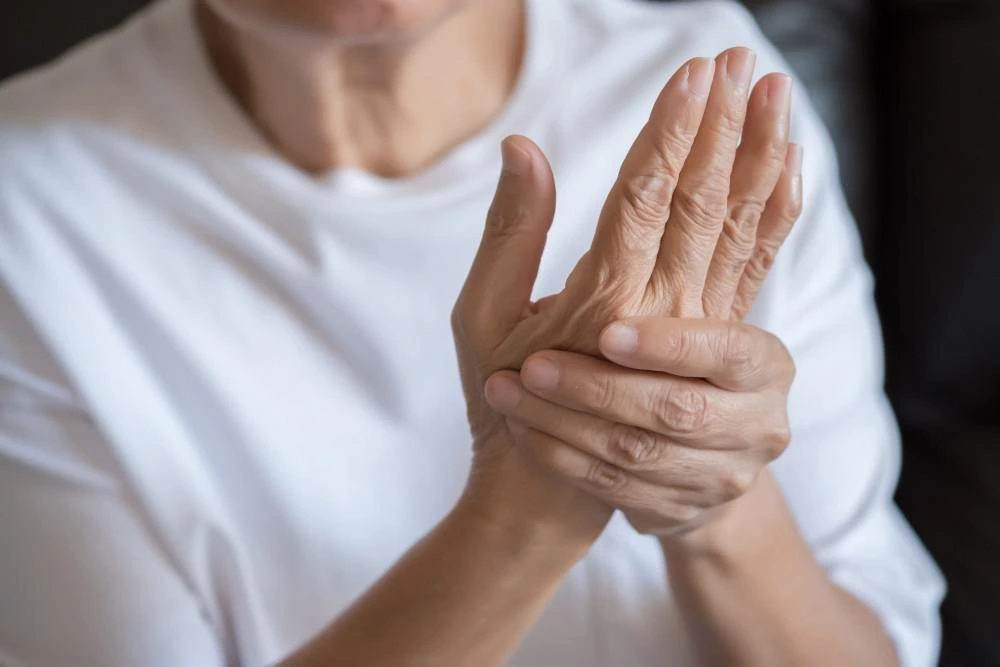Arthritis refers to joint inflammation and includes many conditions affecting joints, surrounding tissues, and other connective tissues. People of all ages, sexes, and races can have arthritis, and it is a leading cause of disability in America. Its impact on daily life varies from mild discomfort to significant limitations in movement and function. Understanding the factors behind arthritis can clarify how it develops and affects quality of life.
Posture-Related Strain
Long-term postural habits can place undue stress on joints, potentially contributing to discomfort and inflammation over time. Consistently holding the body in positions that misalign the spine and joints, such as slouching at a desk or looking down at a phone, forces certain muscles to work harder while others weaken. This imbalance can lead to chronic strain on areas like the neck, back, hips, and knees.
Over years, this persistent stress can wear down cartilage and lead to symptoms associated with certain types of arthritis. This can significantly affect mobility and overall function. Also, everyday activities such as sitting or standing for extended periods may become painful and challenging.
Injury-Related Trauma
Joint injuries, whether from a sudden accident or repetitive motion, can lead to post-traumatic arthritis. A fall, sports injury, or car accident can damage the cartilage or bone directly, altering the joint’s mechanics and leading to accelerated wear and tear. Even if an injury appears to heal completely, the joint may remain more susceptible to developing arthritis years later. This condition can affect any joint but is most common in weight-bearing joints like the ankles, knees, and hips, often resulting in pain, swelling, and instability that can limit physical activities.
Degenerative Conditions
Osteoarthritis, the most common form of this condition, is a degenerative disease that occurs when the protective cartilage cushioning the ends of bones wears down over time. As the cartilage deteriorates, bone may rub directly on bone, causing pain, stiffness, and loss of flexibility. This can make simple tasks like walking or climbing stairs difficult and painful. Other forms of arthritis are related to inflammation driven by the body’s own immune system. These conditions include:
- Rheumatoid Arthritis: An autoimmune disorder where the immune system mistakenly attacks the lining of the joints.
- Psoriatic Arthritis: A condition that affects some people who have psoriasis, causing joint inflammation.
Stress-Related Tension
While emotional stress doesn’t directly cause arthritis, it can worsen the symptoms of existing conditions. When the body is under stress, it releases chemicals that increase inflammation. This can lead to more pain and stiffness in the joints.
For those with inflammatory arthritis, like rheumatoid arthritis, high stress periods can trigger flare-ups. These flare-ups can worsen symptoms and make daily tasks more challenging. Managing stress is therefore a necessary part of living well with arthritis.
Take Charge of Arthritis Care
Living with arthritis presents unique challenges, but understanding the nature of your specific condition is a beneficial first step toward managing its impact on your life. By recognizing the factors that contribute to joint pain and inflammation, individuals can make more informed decisions about their daily activities, lifestyle, and overall wellness strategy. This knowledge can help you to work effectively with healthcare providers to develop a suitable management plan. To learn more about your options and find a specialist who can help, find a physician near you.
Related Post:
- 210-200-8992 – You Need to Know to Stay Safe!
- 8009556600 – How to Stop Harassing Debt Collection Calls!
- Pedrovazpaulo Consulting – Strategy & Innovation for Growth!
- Gärningen – Meaning, Origins, and Cultural Significance!
- Kennedy Funding Ripoff Report – Uncovering the Facts and Complaints!
- Olimpus Scan – Powerhouse Behind Unofficial Manga Translations!
- Antonio Chi Su – Visionary of Cultural Fusion!
- Anthony Skaria – America’s Youngest Real Estate Powerhouse!
- Wepbound – Features, Benefits, and the Future of Work!


